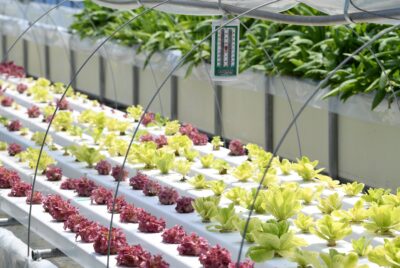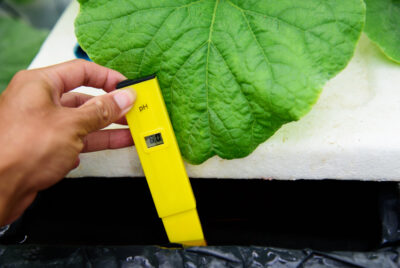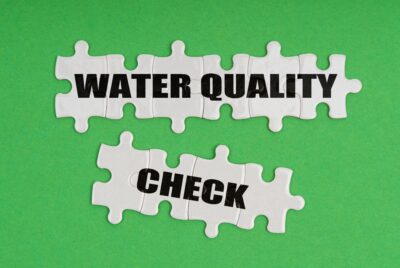Hydroponic Seeds
We may earn a commision from purchases made using our links. Please see our disclosure to learn more.
Hydroponic Seeds: All The Variables To Consider.
Hydroponic gardening has gained immense popularity in recent years due to its numerous benefits and the ability to grow plants indoors without soil. One crucial aspect of successful indoor soilless gardening is choosing the right hydroponic vegetable seeds. In this article, as an enthusiast and advisor in the indoor gardening niche, I will provide helpful suggestions and reasons for selecting the most suitable seeds for your garden.
Introduction
Hydroponic seeds refer to the specific varieties of plant seeds that are well-suited for growing in an indoor hydroponic system. These hydroculture marvels are specially selected based on their adaptability to soilless cultivation, which is the essence of hydroponic gardening.
Benefits
When it comes to soilless gardening, using the right seeds can significantly impact the success of your harvest. Here are some key benefits of using these seeds:
- Higher Yield Potential
- Faster Growth
- Disease Resistance
- Optimized Hydroponic Fertilizer Uptake
- Space Efficiency
Types of Hydroponic Seeds
Various types of indoor gardening seeds are available, each serving a specific purpose in your indoor garden. Let’s explore some common types:
Leafy Greens Seeds
Leafy greens are popular choices for hydroponic gardening due to their rapid growth and high nutritional value. Some common leafy greens suitable for hydroponics include lettuce, spinach, kale, and Swiss chard. These seeds are often selected for their ability to thrive in nutrient-rich solutions and compact growth habits.
Herbs Seeds
Growing herbs hydroponically is convenient and ensures a fresh and abundant supply of aromatic herbs. Popular herb seeds include basil, cilantro, parsley, mint, and thyme. These seeds are chosen for their compact size, quick germination, and ability to withstand indoor growing conditions.
Fruit and Vegetable Seeds
Hydroponic systems can also support the growth of various fruits and vegetables. Some popular fruit and vegetable seeds include tomatoes, cucumbers, peppers, strawberries, and beans. These are selected for their ability to produce a bountiful harvest in limited space and optimized hydroponic fertilizer environments.
Flower Seeds
Flower seeds are an excellent choice for those who want to add beauty and color to their indoor gardens. Flowers like marigolds, petunias, pansies, and snapdragons can thrive in indoor hydroponic systems. These seeds are chosen for their vibrant blooms and compact growth habits.
Choosing the Right Seeds
Selecting the appropriate seeds is crucial to ensure successful growth and a fruitful harvest. Consider the following factors when choosing your seeds:
Consider Growth Characteristics
Different plants have varying growth characteristics, such as height, spread, and overall size. It’s important to choose seeds that match the available space in your soilless garden. Compact and bushy varieties are often preferred for indoor hydroponics to maximize space utilization.
Select Disease-Resistant Varieties
Hydroponic plants are susceptible to certain diseases and pests, especially in a controlled indoor environment. Look for seeds that are bred to be resistant to common plant diseases. Disease-resistant varieties will help minimize the risk of plant loss and ensure a healthy and thriving garden.
Look for High-Yield Seeds
Maximizing yield is one of the primary goals of hydroponic gardening. Select seeds that are known for their high-yield potential. These seeds are specifically bred to produce abundant harvests in indoor hydroponic systems, ensuring you can enjoy a plentiful supply of fresh produce.
Consider Hydroponic Fertilizer Requirements
Hydroponic plants rely on fertilizer solutions for their growth and development. Different plants have varying nutrient requirements. Please make sure that the seeds you choose are good for the solution you plan to use. Some seeds may have specific nutrient preferences, and matching those requirements will optimize plant health and productivity.
Determine Germination Time
The time it takes for seeds to germinate can vary significantly. Consider the germination time of the seeds you choose, as this will impact the overall growth timeline of your plants. Faster-germinating seeds allow for quicker establishment and faster harvests.
Starting Your Seeds
Once you have selected the appropriate indoor gardening seeds, it’s time to start the germination process. Follow these steps to ensure successful seed starting:
Preparing Propagation Trays
Choose propagation trays or containers that are suitable for your preferred starting method. These trays could have drainage holes to prevent waterlogging. Fill the trays with a suitable growing medium that provides support and retains moisture while allowing for proper root development.
Choosing the Growing Medium
In hydroponics, the growing medium takes the place of soil and provides support to the plants’ roots. Common hydroponic growing mediums include rockwool, coco coir, perlite, vermiculite, and clay pebbles. Select a growing medium that suits your chosen hydroponic system and the specific needs for germinating.
Germination Techniques
There are various germination techniques you can employ for seeds. One popular method is the paper towel method, where you dampen a paper towel, place the seeds on it, fold it over, and keep it in a warm and dark place until germination occurs. Another option is to use seedling plugs or cubes soaked in a nutrient solution.
Providing Optimal Light and Temperature
Light and temperature play a crucial role in the germination and early growth stages of soilless cultivation seeds. Ensure that your seedlings receive adequate light, either from natural sunlight or hydroponic grow lights. Maintain a suitable temperature range for germination, typically between 70°F and 85°F (21°C and 29°C), to promote healthy seedling development.
Transplanting Hydroponic Seedlings
Once your seedlings have developed strong roots and leaves, it’s time to transplant them into the main hydroponic system. Follow these steps for successful transplanting
Transplanting Process
Carefully remove the hydroponic seedlings from their seedling trays, taking care not to damage the roots. Gently wash away any remaining growing medium from the roots. Place the seedlings into the pre-prepared holes or slots in your hydroponic system. Ensure that the roots are well-covered and supported, and the plants are positioned upright.
Preparing the Hydroponic System
Before transplanting, make sure your hydroponic system is ready to receive the seedlings. Ensure that the fertilizer solution is properly mixed and adjusted to the correct pH level. Check that all necessary equipment, such as pumps, timers, and airstones, are functioning correctly.
Caring for Hydroponic Seedlings After Transplanting
After transplanting, closely monitor the seedlings for any signs of stress or fertilizer deficiencies. Maintain proper lighting, temperature, and nutrient levels as per the specific requirements of the plants you are growing. Regularly check and adjust the pH and fertilizer strength of the solution to ensure optimal uptake.
Hydroponic Fertilizer Management
Proper management is essential for healthy plant growth and a successful hydroponic garden. Consider the following factors when managing nutrients for your seeds.
Understanding Hydroponic Fertilizer Solutions
Hydroponic plants rely on fertilizer solutions to receive the necessary minerals and elements for growth. Familiarize yourself with the components of a balanced fertilizer solution, including macronutrients (such as nitrogen, phosphorus, and potassium) and micronutrients (such as iron, zinc, and manganese).
Maintaining Proper pH Levels
pH is a crucial factor in nutrient uptake by plants. Different plants have varying pH preferences. Maintain the pH of your solution within the appropriate range for the specific plants you are growing. Regularly monitor and adjust the pH level as necessary to ensure optimal nutrient absorption.
Adjusting Hydroponic Fertilizer Strength
The strength or concentration of the solution can be adjusted based on the growth stage of the plants. Hydroponic Seedlings generally require a weaker solution, while mature plants may need a more concentrated solution. Follow the instructions provided by the nutrient manufacturer and make adjustments based on the plant’s nutrient requirements.
Monitoring Hydroponic Fertilizer Deficiencies
Keep a close eye on your plants for any signs of deficiencies. Common deficiencies include yellowing leaves, stunted growth, and discoloration.
If you notice any deficiencies, take appropriate action to address the issue. This may involve adjusting the solution, adding specific supplements, or consulting with a hydroponic expert for guidance.
Common Challenges and Troubleshooting
While hydroponic gardening offers many advantages, it also comes with its own set of challenges. Here are some common challenges you may encounter and troubleshooting tips
Managing Pests and Diseases
Even in a controlled indoor environment, pests and diseases can still affect your hydroponic garden. Implement preventive measures such as regularly inspecting plants, maintaining proper hygiene, and using organic pest control methods. If pests or diseases do appear, promptly identify the issue and take appropriate steps to manage and eradicate them.
Dealing with Hydroponic Fertilizer Imbalances
Maintaining the proper balance of fertilizer is essential for healthy plant growth. Regularly monitor the fertilizer solution’s strength, pH, and composition to prevent imbalances. Adjust the solution as needed to address any deficiencies or excesses. Remember that different plant species may have specific requirements, so tailor your hydroponic fertilizer management accordingly.
Addressing Environmental Factors
Environmental factors such as temperature, humidity, and airflow can impact plant growth in hydroponic systems. Ensure that the growing environment is well-ventilated and maintains suitable temperature and especially humidity levels. Consider using fans, heaters, or air conditioning units with specific hydroponic instruments and controllers to regulate the climate and provide optimal conditions for your plants.
Harvesting and Beyond
Once your hydroponic plants have reached maturity, it’s time to harvest the fruits of your labor. Here are some guidelines for a successful harvest
Recognizing Harvest Readiness
Each plant has specific indicators of harvest readiness. Pay attention to factors such as fruit color, size, and texture for fruits and the stage of flower development for flowers. Follow specific guidelines for each plant variety to ensure optimal flavor and quality when harvesting.
Harvesting Techniques
Use clean and sharp tools to harvest your hydroponic crops. Carefully cut or gently twist the fruits or flowers from the plant to avoid damage. Please make sure to handle the harvested produce with care to prevent bruising or contamination.
Seed Saving and Replanting
If you wish to save seeds from your plants for future use, select the healthiest and most vigorous plants for seed production. Allow the fruits to fully mature on the plant, then collect and store the seeds following proper seed-saving practices. When replanting, ensure that the seeds follow the germination and transplanting steps mentioned earlier.
Cleaning and Maintaining the System
After harvesting, it’s crucial to clean and maintain your hydroponic system to prevent the buildup of algae, pests, and diseases. Disassemble and clean the components of your system, including trays, pipes, and pumps. Sterilize or replace any contaminated or worn-out parts. Proper system maintenance will ensure the longevity of your equipment and the health of future crops.
Conclusion
Hydroponic gardening offers an exciting and efficient way to grow a wide variety of plants indoors. By selecting the right seeds and providing them with optimal growing conditions and nutrient management, you can enjoy a successful and bountiful indoor garden. Remember to continuously monitor your plants, troubleshoot any issues, and adapt your cultivation techniques as needed to achieve the best results.
FAQ’s
Can I use regular seeds for soilless gardening?
Although regular seeds can be used, it’s generally recommended to opt for types that have been specifically bred or selected for hydroponic cultivation. These seeds are likelier to thrive in a soilless environment and have traits suited for hydroponic systems.
What is the best lighting for seed starting?
Commonly, gardeners use fluorescent lights or LED grow lights for seed starting. They provide the right spectrum of light for seedlings without generating excessive heat. Position the hydroponic grow lights close to the seedlings to ensure proper light absorption and adjust the height as the plants grow.
How often should I check the hydroponic fertilizer solution in my hydroponic system?
Regular monitoring of the solution is essential. Make it a point to regularly check the solution’s pH and strength at least once a week, and, if necessary, adjust them as needed. Additionally, keep an eye on the levels in the reservoir and top up or replace the solution when necessary.
Do you know if I can use the growing medium for multiple plantings?
Reusing the growing medium depends on its condition and the plants grown. Some mediums, like rockwool, can be reused after proper sterilization. Others, like coco coir or perlite, may deteriorate over time and are best to be replaced. Inspect the medium for any signs of contamination or degradation and make an informed decision based on its condition.
Successful hydroponic gardening requires patience, attention to detail, and a willingness to adapt and learn. With the right seeds, proper care, and a well-maintained system, you can enjoy the rewards of growing a thriving indoor soilless garden. Happy gardening!





Comments are closed.